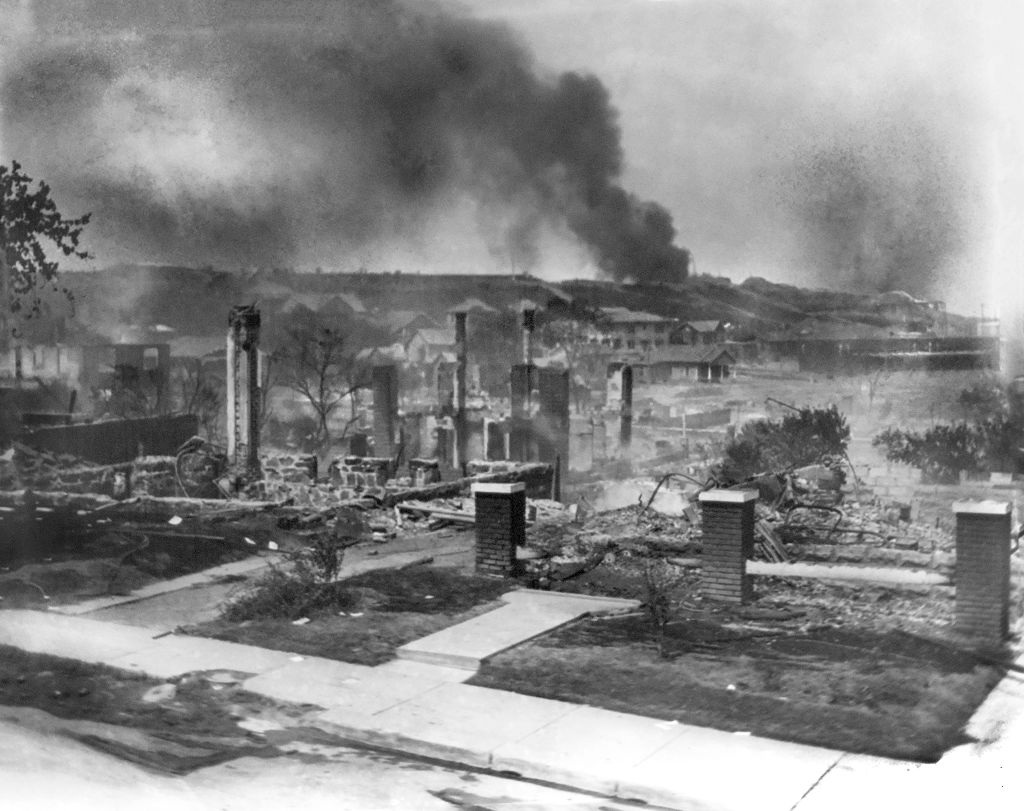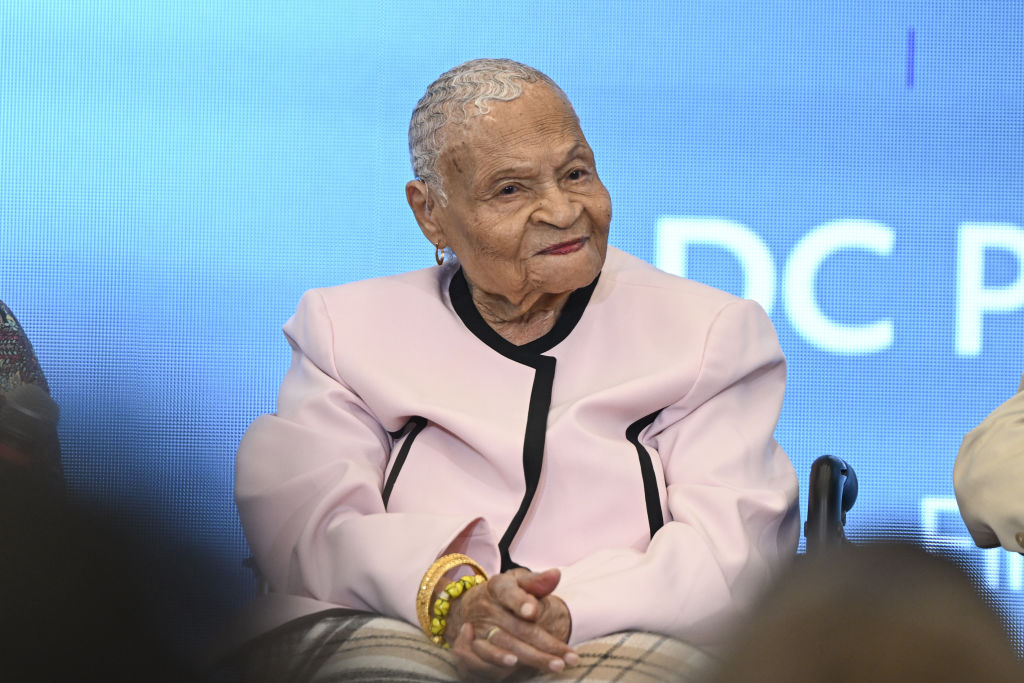Tulsa Race Massacre Opinions By Judge, School Chief Go Viral
Tulsa Race Massacre Survivors Denied Reparations After State School Chief Downplayed ‘Skin Color’ In Violence

Smoldering Ruins of African Americans’ Homes following Tulsa Race Massacre, Tulsa, Oklahoma, USA, Alvin C. Krupnick Co., June 1921. | Source: Universal History Archive / Getty
People wondering if the U.S. will ever reckon with its historic basis of white supremacy were dealt a sobering dose of reality last week in a pair of instances that upheld anti-Black violence while also downplaying the aspect of race as they pertain to the Tulsa Race Massacre of 1921.
Most recently, an Oklahoma judge denied “access to justice” for three remaining survivors of white supremacist-led terrorism that destroyed a thriving Black business district and killed hundreds of people more than 100 years ago, advocates said.
A lawsuit that was filed on behalf of Lessie Benningfield Randle, Viola Fletcher and Hughes Van Ellis and seeking reparations for them was on Friday dismissed with prejudice, which means the case can no longer be tried in court, the Associated Press reported.
A group supporting Randle, Fletcher and Van Ellis suggested there will be an appeal in the case while also noting that such an action will be time consuming and most likely would not be completed before one or all of the Tulsa Race Massacre survivors die of old age. Each is more than 100 years old.

109-year-old survivor of the Tulsa Race massacre Viola Fletcher speaks about her memoir in Washington D.C., on June 18, 2023. | Source: Anadolu Agency / Getty
“Judge Wall effectively condemned the three living Tulsa Race Massacre Survivors to languish — genuinely to death — on Oklahoma’s appellate docket,” Justice for Greenwood said in a statement. “There is no semblance of justice or access to justice here.”
The AP reported on the lawsuit’s contents:
The lawsuit was brought under Oklahoma’s public nuisance law, saying the actions of the white mob that killed hundreds of Black residents and destroyed what had been the nation’s most prosperous Black business district continue to affect the city today.
It contended that Tulsa’s long history of racial division and tension stemmed from the massacre, during which an angry white mob descended on a 35-block area, looting, killing and burning it to the ground. Beyond those killed, thousands more were left homeless and living in a hastily constructed internment camp.
The city and insurance companies never compensated victims for their losses, and the massacre ultimately resulted in racial and economic disparities that still exist today, the lawsuit argued. It sought a detailed accounting of the property and wealth lost or stolen in the massacre, the construction of a hospital in north Tulsa and the creation of a victims compensation fund, among other things.
The lawsuit’s dismissal was the latest affront to the survivors in two days.
Just hours before Wall dismissed the lawsuit, State Superintendent of Public Instruction Ryan Walters explicitly said during a forum about school curriculum in Oklahoma that he didn’t think the Tulsa Race Massacre had anything to do with race at all.
“Let’s not tie it to the skin color and say the skin color determined that,” Walters said at the event in the capital city of Norman on Thursday night.
Walters, a white man who has made no secret of his opposition to critical race theory, enjoyed the privilege of downplaying the aspect of race in a person’s existence, OU Daily reported.
“I would never tell a kid that because of your race, because of the color of your skin, or your gender or anything like that, you are less of a person or are inherently racist,” Walters also told the audience, which at times booed him. “That doesn’t mean you don’t judge the actions of individuals … But to say it was inherent in that because of their skin is where I say that is critical race theory. You’re saying that race defines a person.”
Waters later said his comments were misunderstood while doubling down on them at the same time.
“It’s unfortunate,” Walters told Fox 25. “We had some folks in the media that took out of context what I said. The Tulsa Race Massacre was a terrible, evil event perpetrated by folks that chose to act in a way that was evil and racist.”
It was 102 years ago when mobs of angry, racist white people descended on the Greenwood section of Tulsa and strategically targeted Black people along with businesses and residences they built and worked and lived in that were part of Black Wall Street, as the area had come to be known for its historic financial success and overall prestige. Historians believe that Greenwood was likely the wealthiest Black community in the country at a time when that type of financial success was disproportionately restricted to white people.
The violence included deadly shootings and arson to 35 blocks of buildings, leaving bodies strewn in the streets and structures smoldering after being burned down to the ground.
Photos taken during the Tulsa Race Massacre’s 18 hours of violence as well as others captured in the hours, days, weeks, months and years since it took place underscore the devastation inflicted on Black Wall Street and its survivors, many of whom lost family members.
The end result has been 10 decades of the residual effects of the domestic terrorism that robbed generations of Black Tulsans of the type of accumulated wealth enjoyed by so many white Americans, including those who now own businesses and homes where Black Wall Street once stood.
This is America.
SEE ALSO:
The Tulsa Race Massacre And Making The Case For Reparations
After The Tulsa Race Massacre: Continuing The Fight For Equity, Equality And Inclusion


















